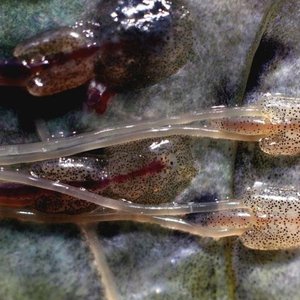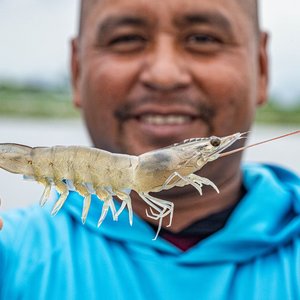Abstract
Vietnam has produced black tiger shrimp (Penaeus monodon) seed for nearly 20 years. Currently, there are more than 5,000 hatcheries throughout Vietnam producing a total of 26 billion petalitre (PL) in 2004. The two provinces of Khanh Hoa and Ca Mau are considered the major seed production centres.
To date, hatcheries have been able to supply the demands of the commercial shrimp farms. But variable seed quality, and the prevalence of diseases have limited growth in both the hatchery and grow-out sectors.
To provide practical and effective technical guidance for shrimp hatchery management, it is necessary to establish a set of Better Management Practices (BMPs) which underpin an effective hatchery production system. These include the presence of essential infrastructure, the development of the maintenance of biosecurity, the provision of adequate amounts of clean water, the responsible use of chemicals, correct feeding practices, and the assurance of the health status of stocks through in-house and laboratory testing.
This document is not a complete manual on the management of P. monodon hatcheries. Rather, it focuses on the implementation of BMPs for black tiger shrimp hatcheries covering all critical stages and processes in the production cycle.
Keywords
Better Management Practices (BMP), Black Tiger Shrimp, Penaeus monodon, Hatcheries, Vietnam
Table of contents
1 Background
2 BMPs for General Hatchery Management
2.1 Infrastructure Requirements.
2.2 Water Quality and Treatment.
2.2.1 Sedimentation/sand filtration of inlet water
2.2.2 Disinfection of inlet seawater using chlorine
2.3 Facility Preparation
2.4 Separation and Disinfection of Equipment for Each Tank, Hands and Feet
2.5 Documentation and Record Keeping
3 BMPs for Broodstock Management
3.1 General Guidelines for Collectors and Suppliers
3.2 Broodstock Collection
3.3 Broodstock Selection
3.4 Broodstock Preparation for Transport
3.5 Broodstock Transportation
3.6 Broodstock Acclimation
3.7 Broodstock Holding, Disease Checking and Feeding
3.8 Broodstock Spawning and Hatching
4 BMPs for Larval Rearing Management
4.1 Larval Rearing Tank Stocking and Water Exchange
4.2 General Health Assessment
4.3 Larval Feeding Regime
4.4 Use of Live or Preserved Algae
4.5 Artemia Hatching and Disinfection Procedures and Use
4.5.1 Hatching procedures
4.5.2 Artemia nauplii disinfection techniques
4.6 Use of Probiotics to Replace Antibiotics
4.7 PL Quality Testing
4.7.1 Gross examination
4.7.2 Microscopic examination
4.7.3 Stress testing
4.7.4 Vibrio examination
4.7.5 PCR testing
4.8 PL Harvest and Transportation
Appendix 1: Examples of recording sheets
Appendix 2: Washing/Disinfection Protocols for Shrimp Eggs/Nauplii
Appendix 3: Decapsulation Protocols for Artemia Cysts
Appendix 4: Leaflet on how to plan stocking with good quality seed
Author(s)
Drs Pornlerd Chanratchakool, Flavio Corsin & Matt Briggs
ENACA
Publication
ENACA, Nov 2005
Link
Download from ENACA here.







